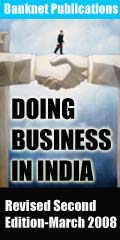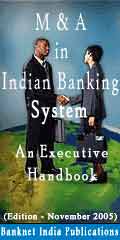|
|
Indian Banking sector challenged by domestic, not global, factors
October 14, 2008: CRISIL believes that the Indian banking system is relatively insulated from the factors leading to the
turmoil in the global banking industry. Further, the recent tight liquidity in the Indian market is also
qualitatively different from the global liquidity crunch, which was caused by a crisis of confidence in
banks lending to each other. Says Roopa Kudva, Managing Director and Chief Executive Officer,
CRISIL, “While the main causes of global stress are less relevant here, Indian banks do face
increased challenges due to domestic factors. The banking sector faces profitability pressures due to
higher funding costs, mark-to-market requirements on investment portfolios, and asset quality
pressures due to a slowing economy.” CRISIL views the strong capitalisation of Indian banks as a
positive feature in the current environment.
The problems of global banks arose mainly due to exposure to sub-prime mortgage lending and
investments in complex collateralised debt obligations whose values have seen sharp erosion.
Globally, banks have also been affected by the freeze in the inter-bank lending market due to
confidence-related issues. On both counts, Indian banks have limited vulnerability.
Indian banks’
global exposure is relatively small, with international assets at about 6 per cent of the total assets.
Even banks with international operations have less than 11 per cent of their total assets outside India.
The reported investment exposure of Indian banks to distressed international financial institutions of
about USD1 billion is also very small. The mark-to-market losses on this investment portfolio, will,
therefore, have only a limited financial impact. Indian banks’ dependence on international funding is
also low.
The reasons for tight liquidity conditions in the Indian market in recent weeks are quite different from
the factors driving the global liquidity crisis. Some reasons include large selling by Foreign
Institutional Investors (FIIs) and subsequent Reserve Bank of India (RBI) interventions in the foreign
currency market, continuing growth in advances, and earlier increases in cash reserve ratio (CRR) to
contain inflation. RBI’s recent initiatives, including the reduction in CRR by 150 basis points from
October 11, 2008, cancellation of two auctions of government securities, and confidence-building
communication, have already begun easing liquidity pressures.
The strong capitalisation of Indian banks, with an average Tier I capital adequacy ratio of above 8 per
cent, is a positive feature in their credit risk profile. Nevertheless, Indian banks do face challenges in
the current Indian economic environment, marked by a slower gross domestic product growth,
depressed capital market conditions, and relatively high interest rate regime. The profitability of
Indian banks is expected to remain under pressure due to increased cost of borrowing, declining
interest spreads, and lower fee income due to slowdown in retail lending. Profit levels are also likely
to be impacted by mark-to-market provisions on investment portfolios and considerably lower profit
on sale of investments, as compared with previous years. Moreover, those Indian banks considering
accessing the capital markets for shoring up capital adequacy may be forced to curtail growth plans, if
capital markets remain depressed.
Says Raman Uberoi, Senior Director, CRISIL Ratings, “While
these challenges will play out over the medium term, CRISIL expects the majority of Indian banks’
ratings to remain unaffected, as they continue to maintain healthy capitalization, enjoy strong
system support and benefits of government ownership in the case of public sector banks.”
(This is press release of CRISIL)
Indian banking system is stable and sound, says RBI Governor
Indian Government sets up group to assess liquidity requirements
Indian economy and banking system has the capacity to weather the global financial crisis, says Indian government
Subprime Crisis: A Special
CLICK FOR SPECIAL SECTION ON GLOBAL FINANCIAL CRISIS
CLICK FOR MORE FEATURES & STORIES

|
|


|



